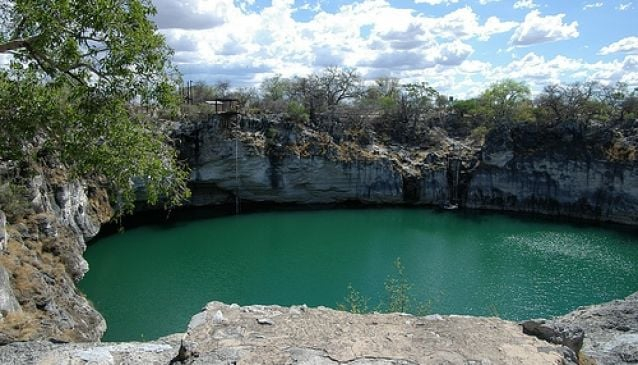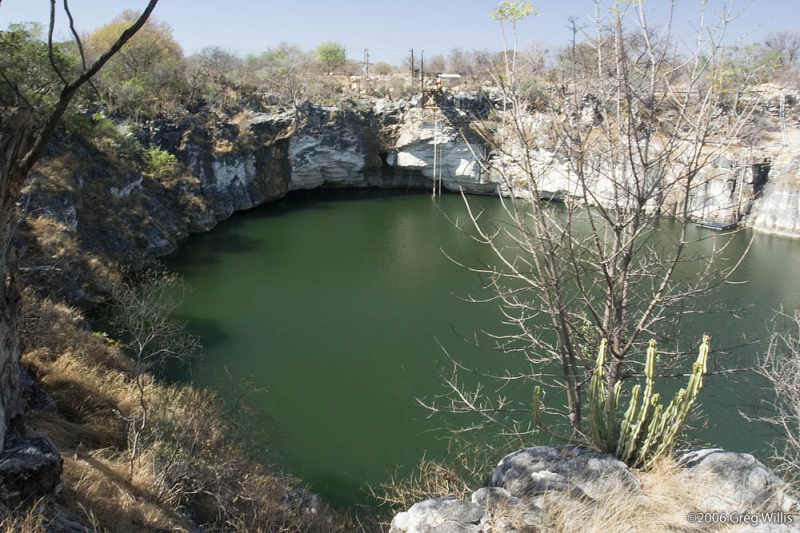Otjikoto Lake
Otjikoto Lake is the smaller of only two permanent natural lakes in Namibia. It is a sinkhole lake that resulted from a karst cave collapse. It is only 100 meters from the main route B1 and 20 kilometers (12 miles) northwest of Tsumeb. In 1972, the lake was designated as a national monument and one of the most beautiful lakes in Namibia.
During World War I, the lake was used as a disposal site for German Schutztruppe; in June 1915, German troops buried war supplies there before surrendering to prevent the South African and British troops from using them. While the majority of the larger components have been found and are now on exhibit in the Tsumeb Museu. If you have visited this lake, you should also visit the museum in Tsumeb to experience the full history of this lake. Weapons were dumped in the lake and later recovered. The Germans allegedly also threw a locked safe into the lake. There has been no progress in finding it or the 6 million gold marks it is rumored to contain.
Botanist Kurt Dinter visited Otjikoto lake in 1911 and collected several hitherto unknown species of plants, among them grass of the genus Rottboellia. Tilapia Guinasana is a species of cichlid fish that naturally was only found in Otjikoto's sister lake. Visitors arrive in a tidy, green landscape on their way to the lake after paying an entrance charge. Visit a "small zoo" where you can get a close-up look at ostriches, warthogs, and a crocodile.
- Location: North of Tsumeb





